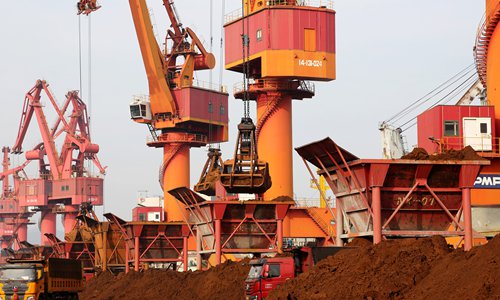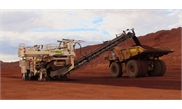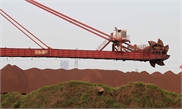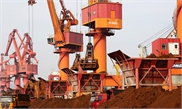Iron ore price soars as China-Australia trade uncertainties linger
As inflation builds up, market demand for steel will edge down

Cranes unload imported iron ore at the Lianyungang Port in East China's Jiangsu Province on Sunday. In September, the port's iron ore throughput exceeded 6.5 million tons, a new high for the year, making it a major port for iron ore imports in China. Photo: VCG
China's iron ore prices have hit record highs, driven by surging steel demand as well as speculation on fluctuations in China-Australia iron ore trade, industry experts told the Global Times. They also warned of a possible price plunge with market liquidity tightening and rising inflation levels.
On Monday, the most active iron ore contract for September 2021 delivery gained 10 percent to close at a record high of 1,326 yuan ($206.2) per ton, data released by the Dalian Commodity Exchange showed. The contracts for February 2022 and March 2022 rose by 9.98 and 9.96 percent, respectively.
In a global context, the S&P Global Platts IODEX, a benchmark assessment of the spot price of physical iron ore, was assessed at a record high of $212.8 per dry metric ton on Friday, the third record in 10 days.
Experts have attributed price surges to uncertainties arising from the suspension of economic dialogue between China and Australia, normally a strong exporter of iron ore to China. This uncertainty could cause futures market speculation, they said.
"There must have been speculation recently, as some overseas investment banks have been increasing investment in Chinese iron ore. The short-term speculation would definitely provide a big lift to the iron ore market," Wang Guoqing, research director at the Beijing Lange Steel Information Research Center, told the Global Times.
According to him, China's imports of iron ore from Australia accounted for 60.9 percent of China's total imports in 2020. "This means that if there are changes in the two countries' iron ore trade, China's ore supplies will be tight," he said.
Wang said that China has sought ways to reduce reliance on iron ore from Australia, such as cooperating with African and South American countries in opening new mines, but the process takes time and results won't emerge in the short term.
Iron ore prices have also been supported by surging demand for steel. Wang said that the gross profit on a ton of steel is about 1,000 yuan now. Such ample profitability has driven up the price of iron ore, which is the raw material for making steel.
According to a statement sent by Beijing Lange Steel Information Research Center to the Global Times, China's regional environmental protection policies, the government's aim to fulfill carbon neutrality goals, and a new capacity replacement plan have stimulated steel prices, while the rocketing futures market is also lifting the spot price to record highs.
On Monday, the deformed iron ore contract for January 2022 stood at about 5,887 yuan per ton, a record high, data from the Shanghai Futures Exchange showed.
Such price levels will persist for a while, experts said, but the growth rate will slow as it will impose a great burden on downstream industries like cars, electric appliances and ships.
Wang also cautioned that in the long run, a sharp dip in iron ore prices is possible as demand will be suppressed.
"With coming of the rainy season in China, home-building demand will weaken, while the government's controls on the real estate industry will repress new housing demand. Besides, rising inflation and tighter liquidity might also trigger an iron ore price run-up," he said.
A manager with a steel company based in Tongling, East China's Anhui Province, told the Global Times on condition of anonymity that given the resilient demand for steel in the market, he believed it would be a future trend for the iron price to get back to normal levels in response to the government policy that leads to a gradual transformation toward more green energy.
So far his company has not seen any significant impact from the soaring steel prices since their profit margin is adequate to cover up the rising cost, the person said.




